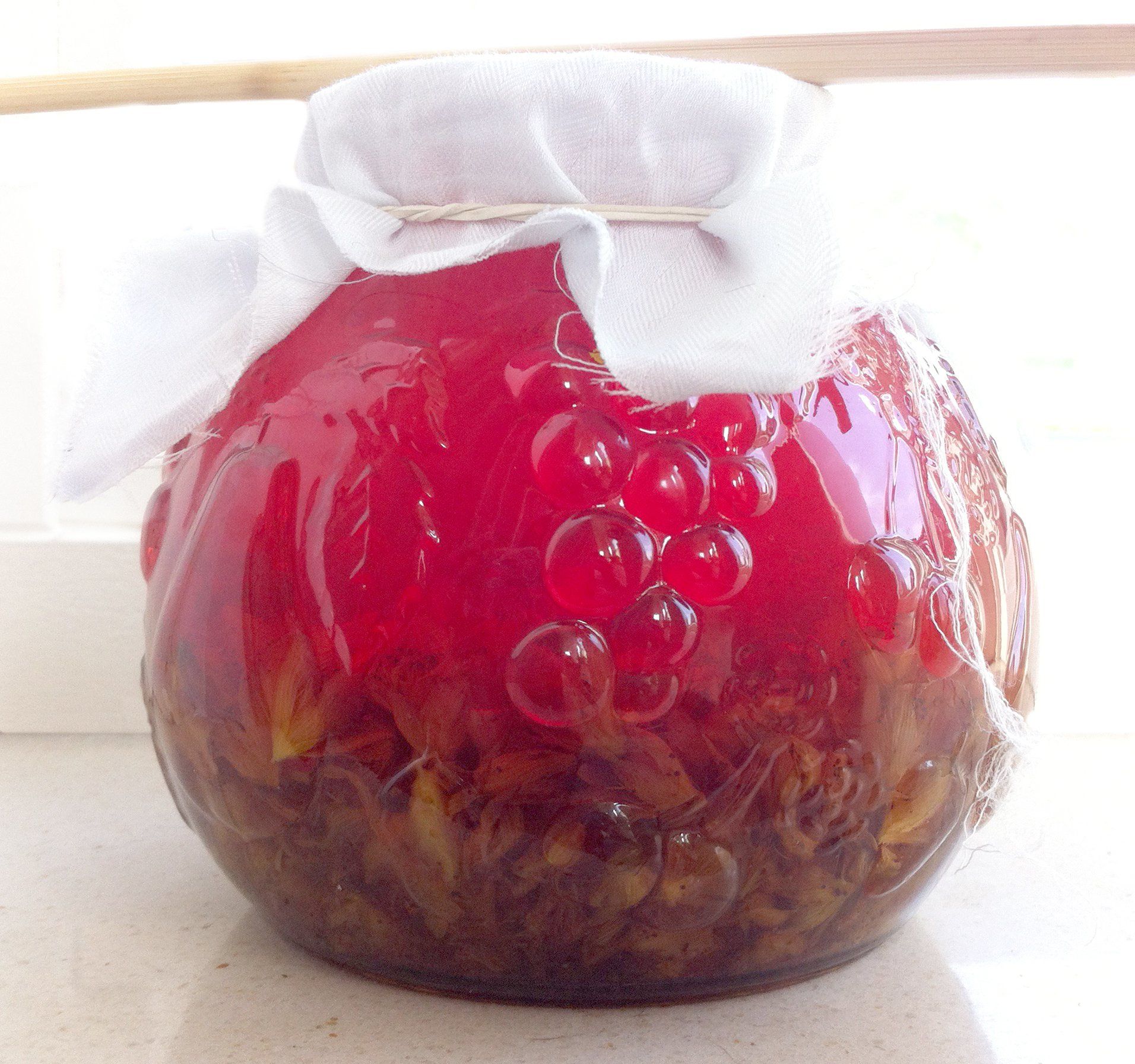do it yourself.
Make your own Sint Jans oil
... OR ANOTHER OIL FROM FRESH HERBS ...
Making delicious oil yourself doesn't have to be complicated at all. The moment of harvesting your herbs is especially important and the quality of your oil and the amount of solar power that you have at your disposal. And well, we don't have much influence on that unfortunately.
For Sint Jans oil I use organic quality sun oil myself. Olive oil or almond oil (organic) are also a good base oil to use.
Pick the flowers of St. John's on a dry sunny day. Do this after the morning so that the bees have also been able to snack on it. I never pick everything myself, but a (small) part for a few days in a row. Together we will share everything ...
Fill a glass jar two thirds with the flowers and fill the jar with the oil. Cover it with a piece of fabric so that no dirt can get in and it can breathe. Place this pot in a warm, dry place. For example in the windowsill so that the heat from the sun can work on the flowers and the oil.
The first week you have to stir daily so that the substances can mix with the oil. As soon as the flowers sink to the bottom, they are saturated and you no longer need to stir.
Sint Jans oil gets a lovely deep red color! A joy to behold!
After about 3 weeks you can strain the oil. Use cheesecloth or a coffee filter for this. You can now store the strained oil in brown glass bottles. These extend the shelf life.
Other herbs to make oil from are:
• Marigold | purifying and healing for all kinds of skin conditions
• Mallow | in inflammations of the skin, dry eczema, psoriasis
• Chamomile | soothing and healing for the skin
• Lavender | insect bites, eczema, burns, against lice
(made this way it is not an essential oil).
• Stable candle | for cough, sinus and cystitis
• etc.
Have fun creating and if you have any questions about it please let me know! Cindy

List of services
-
Nettle VultureListing 1Nettle vulture is a natural food source for plants and a pesticide against lice, fungi and uninvited guests. I will tell you here what I have used it for in recent years and how you can make it very simple yourself.
-
Nettle OintmentListing 2Nettle sting, mosquitoes, bees and wasp sting, all stings, all burns, acne, dirty wounds ... smear it with your homemade nettle ointment. Difficult? Not at all!
-
St. John's OilListing 3Making delicious oil yourself doesn't have to be complicated at all. The moment of harvesting your herbs is especially important and the quality of your oil and the amount of solar power that you have at your disposal.
-
Herbal tinctureListing 4A tincture is an infusion of the herbs. The active substances or constituents are absorbed by the alcohol. This gives you a mother tincture that can be kept for a very long time (years).
-
Herbal Cough SyrupUche, uche uche ... You just make a cough syrup from herbs yourself. Beneficial and delicious!
-
Iced teaMaking iced tea yourself is actually too simple for words. You make strong tea from herbs / tea that you like, let it cool down, add sugar (preferably not) or honey (better) and a handful of ice cubes.
-
Flower butter
You only need a few ingredients for this simple flower butter. Basically, you can already get started with a packet of real butter at room temperature and some beautifully colored flowers from your garden.
-
Elderflower waterUhhh ... this one is going to be really short. And powerful. Because Elderflower is resistance and makes you stronger from within. It is a blessing for starting flu symptoms such as a sore throat and cough.
-
Spring TeaSpring is the time of the year to drain the remnants left in your body from the winter. And that can be done very simply with herbs. And maybe they (or some of them) are just growing in your own garden.
-
Natural DeodorantOh how happy I am with this recipe for making your own deodorant! So simple and it works great! Completely mess-free and super cheap.
-
Anti-Mosquito
You can distract them by placing strongly scented plants around your patio. Plants like Lavender, Lemon Balm, Lemon Geranium, Sage and Rosemary.



